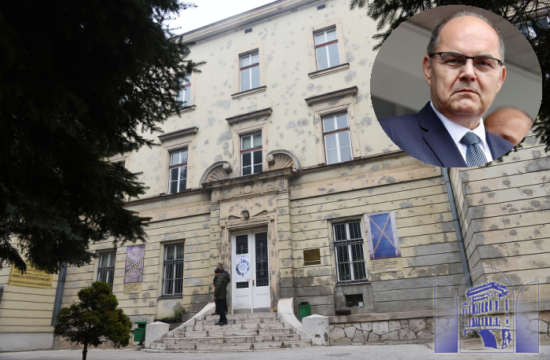
On this day, 30 years ago, Bosnia and Herzegovina was admitted to the membership of UNESCO, the United Nations Educational, Scientific and Cultural Organization.
UNESCO was founded in 1946, and the main goal of the organization is to contribute to peace and security by supporting collaboration among nations through education, science and culture as a method of promoting universal respect for justice, law, human rights and basic human freedoms.
Since 1972, when the Convention for the Protection of World Cultural and Natural Heritage was adopted, more than a thousand properties (cultural, natural, mixed) have been inscribed on the UNESCO World Heritage List.
Bosnian monuments on the World Cultural Heritage List
The Old Bridge of the old city of Mostar was the first to be included in the UNESCO list and has been on it since 2005. The Old Bridge over the Neretva river in the southern city was built between 1557 and 1566, and was the work of an Ottoman builder. On November 9, 1993, it was demolished amidst the aggression against Bosnia and Herzegovina. After the renovation in 2004, it was included in the list of UNESCO's World Cultural Heritage. As stated on the UNESCO website, there was a settlement established as an urban structure in the 15th century on the crossing of a river and a land road was originally located in a valley of the Neretva River, between Hum Hill and the foot of the Velez Mountain.
Two years after the Old Bridge, in 2007, the Mehmed Pasha Sokolovic Bridge, a bridge on the Drina River in the eastern town of Visegrad, which represents one of the most monumental works of architecture created in the period from the 15th to the 19th centuries in Bosnia and Herzegovina, was added to the UNESCO list. The bridge over the Drina river in Visegrad is a masterpiece of bridge construction. It was built between 1571 and 1577 at the request and order of Mehmed Pasha Sokolovic.
At the UNESCO summit in Istanbul on July 15, 2016, a decision was made to enter ‘stećak’ (a monumental medieval tombstone) on the World Cultural Heritage List. There are a total of 30 necropolises on the list, of which 22 are located on the territory of Bosnia and Herzegovina, three each on the territory of Serbia and Montenegro, and two on the territory of Croatia. The process of preparing documents for inclusion on the UNESCO list lasted six years, and began in Sarajevo in 2009, with the signing of a letter of intent on joint nomination between Bosnia and Herzegovina, Serbia, Croatia and Montenegro.
The areas from Bosnia and Herzegovina that are on the tentative list are the natural and architectural complex of Jajce, Sarajevo – a unique symbol of universal multiculturalism – a permanently open city, the historical urban area of Pocitelj, the natural and urban area of Blagaj, the natural and historical area of Blidinje, the natural and historical area Stolac, Vjetrenica cave, Perucica rainforest and the Jewish cemetery in Sarajevo.
When it comes to intangible heritage, snake embroidery and equestrian woodcarving are on the Representative List of the Intangible Heritage of Humanity.
In 2017, two goods of the documentary heritage – the Sarajevo Haggadah and the Manuscript Collection of the Gazi Husrev Bey Library – were entered into UNESCO's International Memory of the World Register.
The Sarajevo Haggadah is an exceptional example of medieval Hebrew decorative art. It is a manuscript written on parchment, with a number of superb illustrations, and is among the most famous and beautiful illuminated Hebrew manuscripts from the Middle Ages in the world. The Sarajevo Haggadah was created in the middle of the 14th century, presumably in the northern part of Spain. In 1894, the Haggadah was bought by the National Museum of Bosnia and Herzegovina from the then owner, the Koen family. In 2003, the Haggadah was declared a movable national monument of Bosnia and Herzegovina.
The collection of manuscripts of the Gazi Husrev Bey's library in Sarajevo contains 10,561 unique manuscripts, which are an integral part of about 20,000 major and minor works from Islamic sciences, oriental languages, fine literature, philosophy, logic, history, medicine, veterinary medicine, mathematics, astronomy and others. science. The oldest preserved manuscript from this collection dates from 1105.




Kakvo je tvoje mišljenje o ovome?
Budi prvi koji će ostaviti komentar!